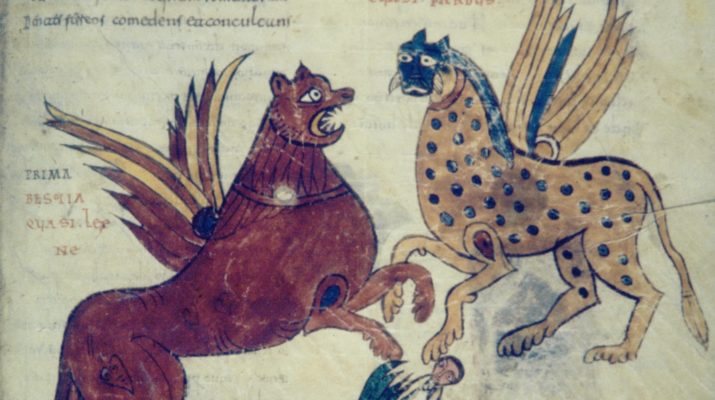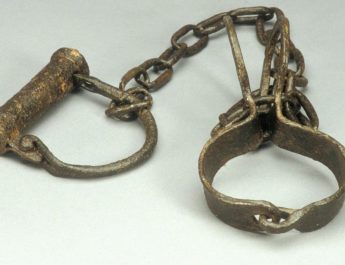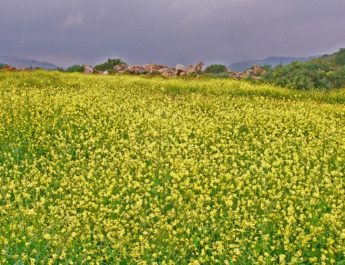Daniel 7:1-3, 15-18
All Saints’ Day C
1 In the firstA yearB of KingC BelshazzarD of Babylon,E
A “first” = chad. 14x in OT. Aramaic corresponding to Hebrew echad (number one, first, united; alone, altogether, a certain, a few); perhaps from achad (to unify, continue on a path; figuratively, to gather one’s thoughts). This is one, same, together.
B “year” = shenah. 7x in OT. Aramaic corresponding to Hebrew shanah (year, age, old, yearly); from shana (to change, alter). This is year or age.
C “King” = melek. Aramaic corresponding to Hebrew melek (king, royal); from malak (to be or become king or queen, to rise to the throne, to be crowned; by implication, to take counsel). This is king or royal.
D “Belshazzar” = Beelshatstsar. 7x in OT. Aramaic corresponding to Hebrew Beleshatstsar (Belshzzar; “Bel protect the king”); from Akkadian bel-sharra-utstsur (“may Bel protect the king”); {from bel (lord) + sharru (king) + natsaru (to protect)}. This is Belshazzar, meaning “Bel, protect the king.”
E “Babylon” = Babel. Aramaic corresponding to Hebrew Babel (Babylon or Babel); perhaps from balal (to anoint, mix, overflow) OR from Akkadian Bbilim; perhaps from earlier Sumerian name Ca-dimirra (gate of god). This is Babel or Babylon. See https://en.wikipedia.org/wiki/Babylon.
F “Daniel” = Daniyel. Aramaic corresponding to Hebrew Daniyyel (Daniel, “God is my judge”); {from din (to judge) + el (God, a god)}. This is Daniel, “God is my judge.”
G “had” = chazah. Aramaic corresponding to Hebrew chazah (to gaze at – to see or behold; perceiving as a mental process or looking at something with pleasure; seeing a vision). This is to see, have a dream.
H “dream” = chelem. Aramaic corresponding to chalom (a dream, dreamer); From chalam (properly, to bind solidly and so to be plump; to be healthy or strong, to recover; figuratively, to dream). This is dream.
and visionsI of his headJ as he lay in bed.K
I “visions” = chezu. Related to “had” in v1. 12x in OT. Aramaic from chazah (see note G above). This is a vision or appearance.
J “head” = resh. 14x in OT. Aramaic corresponding to Hebrew rosh (head, captain, or chief; excellent or the forefront; first in position or in statue or in time). This is head, chief, or sum.
K “bed” = mishkab. 6x in OT. Aramaic corresponding to Hebrew mishkab (a place where one lies down i.e. a bed, couch, or bedchamber; sleep or euphemistically sex); from shakab (to lie down, lodge; lying for sleep, sex, or other reasons). This is couch of bed.
Then he wrote downL the dream:M 2 I, Daniel, sawN in my vision by nightO, P
L “wrote down” = kethab. 8x in OT. Aramaic corresponding to Hebrew kathab (to write, decree, describe, record). This is to write.
M Some manuscripts add = resh + millah + amar. Literally, “the beginning of the words; he said.” Resh is the same as “head” in v1. See note J above. Millah is Aramaic corresponding to Hebrew millah (something said – a word, speech, talking, or discourse); from malal (to say, speak; often used in a poetic sense). This is a word, thing or commandment.
N “saw” = chazah. Same as “had” in v1. See note G above.
O “night” = lela. 5x in OT. Aramaic corresponding to layil (properly, light twisting away; used for night or midnight; figuratively, adversity). This is night.
P {untranslated} = aru. 5x in OT. Perhaps akin to Aramaic alu (behold). This is lo or behold.
Q “four” = arba. 8x in OT. Aramaic corresponding to Hebrew arba (four); from raba (to make square or be four-sided). This is four.
R “winds” = ruach. 11x in OT. Aramaic corresponding to ruach (breath, wind, air, cool, spirit; wind, which resembles the breath and so figuratively life itself or being frail/mortal/impermanent; the air of the sky or the spirit); from ruach (smell, breathe, perceive, anticipate, accept, enjoy). This is wind, spirit, or mind.
S “heaven” = shamayim. Aramaic corresponding to Hebrew shamayim (root may mean being lofty; sky, the air, or heaven; part of the sky where the clouds move; part beyond where the sun, moon, and stars are). This is heavens or sky.
T “stirring up” = giach. 1x in OT. Aramaic corresponding to giach (to break forth like water bursting out, to rush, give birth). This is to break forth, rush.
U “great” = rab. 15x in OT. Aramaic corresponding to Hebrew rab (abundance, many, elder, exceedingly, great; abundance of amount, rank, or status); from rabab (increasing in any aspect whether quantity, authority, size, quality, greatness, etc.). This is great, magnificent, captain, master, stout.
V “sea” = yam. 2x in OT. Aramaic corresponding to Hebrew yam (root may mean to roar; the sea, often the Mediterranean; the roar of crashing surf; rivers or other sources of water; to the west, to the south). This is sea.
3 and four greatW beastsX came upY out of the sea, differentZ from one another.
W “great” = rabrab. Related to “great” in v2. 8x in OT. Aramaic from the same as Hebrew rab (see note U above). This is something very great, arrogantly, domineering.
X “beasts” = cheva. Aramaic corresponding to Hebrew chayyah (living thing, wild animal, creature); from chayah (to live or keep alive literally or figuratively). This is beast or animal.
Y “came up” = cliq. 5x in OT. From Aramaic. This is to ascend or come up.
Z “different” = shena. Aramaic corresponding to Hebrew shana (to change, alter). This is to change or be diverse.
15 As for me, Daniel, my spiritAA was troubledBB withinCC me,DD and the visions of my head terrifiedEE me.
AA “spirit” = ruach. Same as “winds” in v2. See note R above.
BB “was troubled” = kera. 1x in OT. Aramaic probably corresponding to Hebrew karah (to dig or open up; to plot or make a banquet). This is to be troubled or grieved.
CC “within” = gav. 13x in OT. Aramaic corresponding to Hebrew gev (the back or body; by analogy, among or in the middle); from ga’ah (to rise up, increase, grow, be highly exalted; figuratively to be majestic). This is midst, within, same.
DD “me” = nidneh. 1x in OT. Aramaic corresponding to Hebrew nadan (sheath). This is a sheath or body – refers to the body as a vessel for the soul.
EE “terrified” = behal. 11x in OT. Aramaic corresponding to Hebrew bahal (to be afraid, dismayed, amazed; deep trembling within; figuratively, being suddenly agitated; implies moving or acting quickly/anxiously). This is to alarm, terrify, hurry.
16 I approachedFF oneGG of the attendantsHH to askII him
FF “approached” = qereb. 9x in OT. Aramaic corresponding to Hebrew qarab (to come near, offer, make ready). This is to approach, offer, present.
GG “one” = chad. Same as “first” in v1. See note A above.
HH “attendants” = qum. Aramaic corresponding to Hebrew qum (to arise, stand, accomplish, establish, abide; rising against, getting up after being sick or asleep, arising from one state to another, becoming powerful, or rising for action; standing in a figurative sense). This is to rise, establish, set up, stand.
II “ask” = bea. 12x in OT. Aramaic corresponding to Hebrew baah (to inquire, search, boil, or swell out; figuratively, to sincerely desire). This is to request, ask, seek, pray.
the truthJJ concerning allKK this. So he said that he would discloseLL to me the interpretationMM of the matter:NN
JJ “truth” = yatstsiyb. 5x in OT. Aramaic from yetsab (to make sure, be firm, speak with certainty); corresponding to Hebrew yatsab (to set oneself, take a stand, remain, continue, to station or set something in place). This is certainty, certain, true, stand fast, truth.
KK “all” = kol. Aramaic corresponding to Hebrew kol (all, every, everyone); from kalal (to complete). This is whole, all, every.
LL “disclose” = yeda. Aramaic corresponding to Hebrew yada (to know, be aware, see and so understand – includes observation, care, recognition; can also be used as a euphemism). This is to know, certify, teach.
MM “interpretation” = peshar. Aramaic from peshar (to interpret); corresponding to Hebrew pathar (to open up, which is to say to interpret). This is interpretation.
NN “matter” = millah. Same as {untranslated} in v1. See note M above.
17 “As for these four greatOO beasts, four kings shall arisePP out of the earth.QQ
18 But the holy onesRR of the Most HighSS shall receiveTT
RR “holy ones” = qaddish. 13x in OT. Aramaic corresponding to Hebrew qadosh (sacred or holy in a ritual or moral sense; a holy one, saint, angel); a holy place, the sanctuary; God, the Holy One); from qodesh (set apart and so sacred; God is different from us and so God is holy/set apart; things we dedicate to God’s service are set apart for God and so they, too, are holy); related to qadash (set apart, consecrated, hallowed, sanctified; something or someone set apart for a holy purpose or use – ceremonially or morally clean).. This is holy, saint.
SS “Most High” = Elyon. 4x in OT. Aramaic corresponding to Hebrew Elyon (high, upper; elevation – so, lofty); from alah (to go up, ascend, be high, be a priority; to arise in a literal or figurative sense). This is God, the Most High or Supreme.
TT “receive” = qabbel. 3x in OT. Aramaic corresponding to qabal (to receive, undertake, choose, adopt as a custom; literal or figurative). This is to receive or take.
the kingdomUU and possessVV the kingdom forever—forever and ever.”WW
UU “kingdom” = malku. Related to “king” in v1. Aramaic corresponding to Hebrew malkut (royalty, kingdom, realm, empire – the power the sovereign has); from the same as melek (see note C above). This is kingdom, royalty, or dominion.
VV “possess” = chasan. 2x in OT. Aramaic corresponding to Hebrew chasan (to treasure up, be compact, hoard); from chosen (treasure, strength). This is to possess or occupy.
WW “forever – forever and ever” = ad + alam + ad + alam + alam. Literally, “to eternity and to eternity and eternity.” Alam is Aramaic corresponding to Hebrew olam (a long scope of time whether in the past (antiquity, ancient time) or in the future (eternal, everlasting)). This is old or everlasting. It is a point of time in the distant past or indefinite future.
Image credit: “Four Animals” from “The Beato of Valcavado,” copied by Overco in 970.




